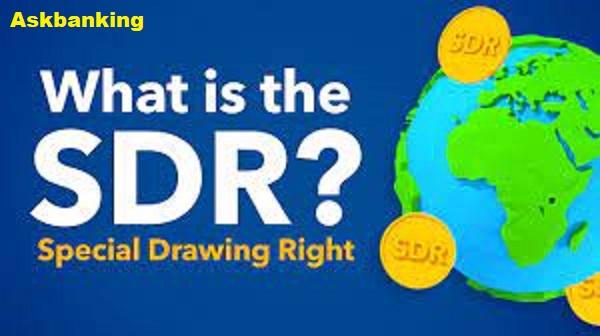The Special Drawing Right (SDR) is an interest-bearing international reserve asset created by the IMF in 1969 to supplement other reserve assets of member countries.
- Special Drawing Right is based on a basket of international currencies comprising the U.S. dollar, Japanese yen, euro, pound sterling and Chinese Renminbi. It is not a currency, nor a claim on the IMF, but is potentially a claim on freely usable currencies of IMF members. The value of the SDR is set daily by the IMF on the basis of fixed currency amounts of the currencies included in the SDR basket and the daily market exchange rates between the currencies included in the SDR basket.
- SDR holdings are one of the components of the Foreign Exchange Reserves (FER) of a country. IMF makes the general SDR allocation to its members in proportion to their existing quotas in the Fund.
- A direct benefit of a general SDR allocation, and indeed the purpose of such an allocation under the Fund‟s Articles of Agreement, is to supplement existing reserve assets to help meet a long-term global need.
- International Monetary Fund (IMF) has made an allocation of Special Drawing Rights (SDR) 12.57 billion (equivalent to around USD 18.133 billion at the latest exchange rate) to India on August 23, 2021.
Also Know – What is Bait Money and its importance in Bank’s Audit ?
Benefits of Special Drawing Right
- SDRs are an international reserve asset created by IMF to supplement member countries’ official reserves.
- They represent a potential claim on the freely usable currencies of IMF members and can be exchanged for these currencies.
- SDRs can be used by IMF members and prescribed holders for a wide range of operations, including payments of financial obligations, loans, pledges, donations, swaps and forward transactions.
- Countries can use them in transactions by exchanging their SDRs for freely usable currencies.
- SDRs are generally administered by central banks and in some cases by the treasury. Depending on the domestic legislation, central banks can either retain SDRs as international reserves or on-lend them to their respective governments.
- In practice, SDRs can be used to increase reserves, for budgetary purposes or to reduce the public debt to IMF. In this sense, SDRs are a highly flexible instrument whose main function
goes beyond that of a reserve asset. - During the global financial crisis, several economies, including Bosnia and Herzegovina, Mauritania, the Republic of Moldova, Serbia, Ukraine and Zimbabwe, used a significant part or their entire allocation for fiscal purposes.

